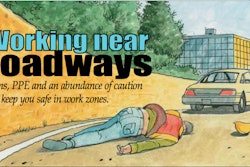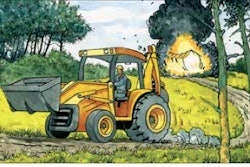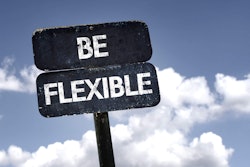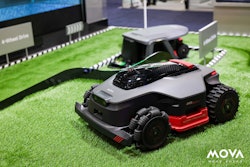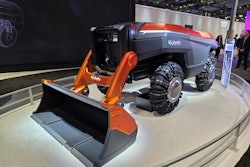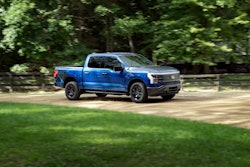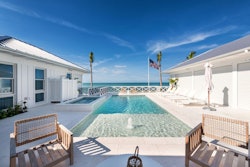Slope stabilization can take the form of reinforcement or vegetation, but some companies are combining the two, while others continue to focus on perfecting the standard.
According to Ken O’Neill, vice president at Belgard Hardscapes, a brand of Oldcastle Architectural, consumers want retaining walls to look natural. They want the look of sculpted stone but with the convenience of easy installation. These preferences influenced Belgard’s newest product, BelAir Wall, which has impressions scanned from natural stone while maintaining easy installation with the use of 3- and 6-inch-tall pieces.
Though the look of the wall takes you back in time, the installation methods continue to move forward. Belgard promotes the use of stabilized aggregate over geosynthetic reinforcement for situations where space is a problem.
According to Belgard, the excavation depth behind a retaining wall is commonly 60 percent or more of the height of the wall when using geosynthetic reinforcement. By using stabilized aggregate, this depth drops to between 30 percent and 40 percent.
Regardless of the installation method, O’Neill says using a retaining wall instead of vegetation allows landscapers to make more use of the land and still have a structural wall.
“A wall can increase parking spaces or provide more feet of retail space or another lot for a home,” O’Neill says.
They also require less maintenance than vegetation and can last for decades, O’Neill adds.
With vegetation as the other means to stabilize slopes, its natural this method would influence traditional retaining walls. Versa-Lok has two products that achieve this combination. The company manufactures Versa-Green wall, which has planting pockets for vegetation built into the blocks.
“We wanted a product for people who wanted to build a wall but not necessarily see it,” says Karl Bremer with Versa-Lok.
Landscapers can control how much of the wall will be seen by the types of plants used. Bremer said a good bit can be obscured with foliage such as vines, and Versa-Green walls contain slots to run irrigation tubing for
easy maintenance.
Taking it several steps further, Versa-Lok worked with Agrecol Corporation of Madison, Wisconsin, to create and distribute the Envirolok wall. This product marries walls and vegetation by allowing the landscaper to grow a retaining wall. The product is filled with a growing medium and planted plugs are placed inside.
“The Envirolok works for certain erosion problems or areas where traditional retaining walls don’t work, like sensitive trout streams or wetland areas,” Bremer says.
Additionally, these walls don’t have to be built using the traditional vertical form, he explains. They can be laid down like a blanket if the situation calls for it.
Versa-Lok distributes the Envirolok wall, which is currently available only in Minnesota, North and South Dakota, Georgia, South Carolina and Alabama.
With the current available options, landscapers should have no problems finding the right fit in controlling erosion. Today’s retaining walls provide long-lasting solutions, have aesthetic value and can increase the use of the land.
